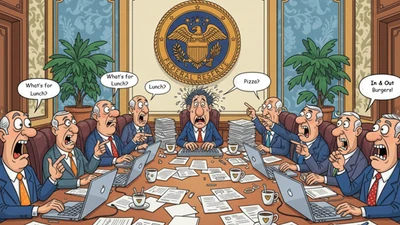For conservative investors in Q2 2025 who aren’t crypto enthusiasts, the digital asset space can feel like a wild frontier—volatile, speculative, and far from the steady dividends or predictable cash flows of traditional investments. Yet, with Bitcoin hitting new highs above $80,000 (as of April 2025) and institutional adoption growing, crypto’s presence in the financial landscape is undeniable. As a financial advisor, I’ll outline what cautious, non-crypto-savvy investors should watch in this market—not to dive in headfirst, but to understand its risks, opportunities, and tangential impacts on a conservative portfolio. Here’s the rundown, tailored for those who value stability over speculation.
1. Bitcoin as a Store of Value
- What to Watch: Bitcoin’s narrative as “digital gold” has gained traction, especially with inflation lingering at 3% and U.S. debt ballooning to $35 trillion. Posts on X highlight its appeal to hedge funds and corporations (e.g., MicroStrategy holds 250,000 BTC), pushing its market cap past $1.5 trillion.
- Conservative Lens: Unlike altcoins, Bitcoin has a fixed supply (21 million coins) and a decade-plus track record, making it the least speculative crypto asset. Its volatility—down 20% in a week, up 50% in a month—is still a dealbreaker for most conservatives, but its staying power warrants attention.
- Key Metric: Watch Bitcoin’s correlation with equities (currently ~0.4). If it decouples and tracks gold more closely, it could signal a maturing asset class—though still too risky for direct ownership.
- What to Watch: Big players like BlackRock (with its Bitcoin ETF) and Fidelity are mainstreaming crypto, while the SEC’s 2025 roadmap hints at clearer rules—potentially approving more spot ETFs. Trump’s pro-crypto stance (e.g., pushing a U.S. Bitcoin reserve) adds tailwinds.
- Conservative Lens: Regulation could tame volatility and fraud (think FTX’s 2022 collapse), making crypto-adjacent investments safer. Conservatives might not buy Bitcoin, but firms enabling this shift—like Coinbase or traditional banks (e.g., JPMorgan)—offer indirect exposure with less stomach-churning risk.
- Key Metric: Track ETF inflows—$20 billion in 2024 alone (per Bloomberg)—and regulatory headlines. A crackdown could tank prices; clarity could stabilize them.
- What to Watch: Stablecoins like USDT (Tether) and USDC, pegged to the dollar, dominate crypto transactions ($100 billion daily volume) and are used for cross-border payments or DeFi yields. They’re less about speculation, more about function.
- Conservative Lens: Stablecoins lack the wild swings of Bitcoin, but risks linger—e.g., Tether’s murky reserves or regulatory scrutiny. Still, their growth reflects a demand for efficient, digital cash, which could influence traditional finance.
- Key Metric: Monitor adoption by payment firms (e.g., PayPal, Visa) and reserve audits. A collapse would ripple; steady growth might signal a safer niche.
- What to Watch: Crypto’s rise affects equities and commodities. Mining firms (e.g., Marathon Digital) tie into energy costs, while tech giants like Nvidia (GPU demand) or Microsoft (blockchain services) ride the wave indirectly. Gold’s luster dims as younger investors flock to BTC.
- Conservative Lens: You don’t need to own crypto to feel its effects. Higher volatility in tech stocks or shifts in inflation hedges (gold vs. Bitcoin) could reshape your portfolio. Tariffs in 2025 might also boost crypto as a “borderless” alternative—watch X for chatter on this.
- Key Metric: Check correlations between Nasdaq and BTC, or gold prices vs. crypto market cap. Divergence could signal portfolio rebalancing needs.
- What to Watch: Crypto’s downsides are glaring—hacks (e.g., $200 million lost in Q1 2025), scams, and 50%+ drawdowns (Bitcoin’s 2022 low was $15,000). Environmental backlash (mining’s energy use) and Fed rate hikes could also cool enthusiasm.
- Conservative Lens: These risks reinforce why direct crypto investment clashes with a cautious mindset. A single tweet from Elon Musk or a regulatory bombshell can erase gains overnight—far from the steady returns of IBM or Treasuries.
- Key Metric: Watch volatility indexes (e.g., Bitcoin VIX) and news flow. Spikes signal trouble; calm might hint at maturity—but don’t hold your breath.
6. How to Approach Crypto Indirectly
For conservatives, crypto isn’t a buy-and-hold asset—it’s a trend to monitor. Here’s how to stay engaged without jumping in:
- Stocks with Exposure:
- Coinbase (COIN): A crypto exchange with $3 billion in 2024 revenue, profitable, and tied to Bitcoin’s fate. Trades at a P/E of 40—pricey but grounded.
- MicroStrategy (MSTR): A Bitcoin proxy with a $20 billion market cap, though its debt load ($2 billion) raises eyebrows.
- Nvidia: Crypto mining boosts GPU sales, but its AI dominance keeps it stable (P/E ~35, 0.1% yield).
- ETFs: The iShares Bitcoin Trust (IBIT) offers regulated exposure, though its 25% annualized volatility still stings.
- Cash on the Sidelines: If crypto crashes (e.g., Bitcoin to $50,000), conservative dip-buyers might scoop up discounted tech stocks hurt by correlation.
The Conservative Play
You don’t need to “get” crypto to watch it. For Q2 2025, focus on:
- Bitcoin’s Stability: Is it a hedge or a rollercoaster?
- Regulation: Will rules make it less of a Wild West?
- Ripple Effects: How does it hit your tech or dividend stocks?
Stick to what you know—blue-chip tech (Microsoft, Intel) or bonds—and let crypto’s chaos play out. If you’re curious, a 1-2% portfolio sliver via Coinbase or an ETF is the max for a conservative toe-dip. Consult your advisor to weigh this against your goals—because in crypto, caution is still king.










